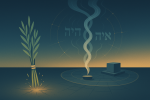
Sweetening Judgments by Entangling Divine Names
VeZot HaBerachah and the Hoshana Rabbah custom of striking the ground with willow twigs tl;dr Incense (ketoret) means “binding,” which we interpret as entanglement; the

VeZot HaBerachah and the Hoshana Rabbah custom of striking the ground with willow twigs tl;dr Incense (ketoret) means “binding,” which we interpret as entanglement; the
“Ein simchah ke’hatarat ha-sfeikot”—there is no joy like the resolution of doubt. On the eve of Rosh HaShanah, our sages describe a cosmic pause: the
In many Ashkenazi communities, the day after Yom Kippur is nicknamed Gott’s Nomen, Yiddish for “G-d’s Name.” Chassidic sources associate the four days between Yom
By Alexander Poltorak לע”נ אבי מורי, אברהם שמשון ע”ה בן ראובן Between the jubilation of Rosh HaShanah and the solemnity of Yom Kippur lie ten
The ten days between Rosh HaShanah and Yom Kippur are called Aseret Yemei Teshuvah (Ten Days of Penitence). As the prophet says: Seek G-d while
I. Introduction Every year on Rosh HaShanah, the raw, unarticulated cry of the shofar cuts through silence. For Kabbalah, that cry is not mere ritual
Sukkah: the portal into the Holy Land Sitting with my wife in our sukkah-hut recently, I was struck by a memory from some four decades ago.
Abstract This essay explores the profound connections between language, philosophy, physics, and spirituality in the context of Rosh HaShanah. By examining the linguistic roots of
It’s All in the Name Rosh HaShanah is usually translated as the New Year. When translated literally, it means the “Head of the Year.” In
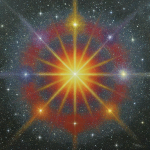
Introduction In this essay, I intend to draw a parallel between the singularity in space-time, such as the putative point of origin of the universe
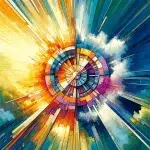
The Torah portion Tzav describes a ritual performed by Moses in consecrating Aaron as the High Priest (Kohen Gadol) and his sons as priests (kohanim):

And ye shall take you on the first day the fruit of goodly trees, branches of palm-trees, and boughs of thick trees, and willows of

Today, on the Seventeenth of Tammuz, Jewish people fast to commemorate several tragic events in Jewish history.[1] These tragic events include the breaking of the
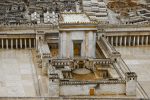
Introduction Today, on Tisha B’Av—the ninth day of Av, this year commemorated on the tenth day of Av because the ninth is Shabbat, when mourning

The forty-nine days between Passover and Shavuot are called the days of Sefira or the days of counting Omer—Sefirat HaOmer—when Jews count every day as

The collapse of the wave function is the process of revealing hidden possibilities. Reducing uncertainty reveals information. Until the wave function collapse, the system is
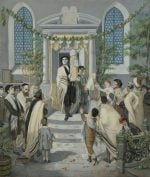
Шавуот Праздник Дарования Торы Aлександр Полторак Закончился праздник Песах. Все евреи поспешно убрали пасхальную посуду в особые шкафы или на чердаки до следующего Песаха.
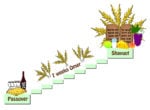
There is a Biblical Commandment to count the days between the Passover and Shavuot, the “Feast of Weeks” (a.k.a. Pentecost). We start counting on the

Jews have a very strange custom to take four species (Heb. arba’a minim)—a fruit of a citron tree (etrog), a branch of a date palm (lulav), boughs from the myrtle tree (chadassim),
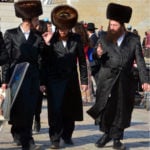
Today is Chol Hamo’ed Sukkot – the intermediate days between the first and the last days of the holiday of Sukkot. These days are not

Meditations on the Maaseh Merkavah – IV This is the fourth and the final installment in the series of posts related to Ezekiel’s prophesy, Ma’aseh
Meditations on the Maaseh Merkavah – III This is the third installment in the series of posts related to the Ezekiel’s prophesy, Maaseh Merkava, “The

Meditations on the Maaseh Merkavah – II This post is a sequel to my previous post, “Space – Between Future and Past.” For background information,
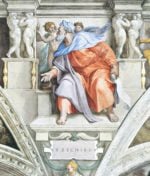
Meditations on the Maaseh Merkavah – I We do science by studying nature. We study physics in a lab, peering into space or working out
Welcome to the premiere of our first film, Quantum Torah. You can watch the film here: Don’t forget to subscribe to my channel here:
Coming soon to a theater near you. Watch a trailer:

When thou shalt besiege a city a long time, in making war against it to take it, thou shalt not destroy the trees thereof by
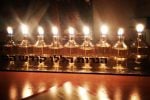
In a Kabbalistic meditation on lighting Chanukah Menorah, the Arizal links the menorah lights with a supernal river (see Candle on the River). The Arizal’s
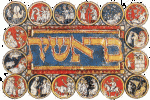
In the last post, Tishrei—Past, Present, and Future, we discussed how all Tishrei holidays – Rosh HaShanah, Yom Kippur, Sukkot, and Simchat Torah – are

The months of Tishrei is full of holidays, and they all share a common theme—the unification of time—past, present, and future. It all starts with
The Torah portion, Re’eh, talks about the Sabbatical Year—in Hebrew, Shemitah—the Seventh year. When the Sabbatical year comes, all loans are forgiven, and Jewish servants

Yesterday was the 9th day of the month of Av or, in Hebrew, Tisha B’Av. Usually, Tisha B’Av is marked by mourning and fasting. Yesterday,

The Passover Seder is called seder, i.e., “order” not without a reason. It is a highly structured and orchestrated ceremony that follows the ancient script—Passover
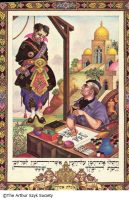
This is what Haman did not understand. Even at the highest level, where there is a complete symmetry between Jacob and Esau, G‑d chooses Jacob—a
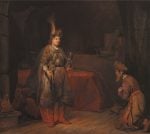
In physics, we seek Grand Unification, also known as the Theory of Everything. The Standard Model describes three out of the four fundamental forces: the

Why is this night different from all other nights, asks a child on the Seder night. On this Simchat Torah I asked a different question—why
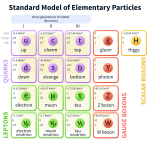
Ye are standing this day all of you before the Lord your G‑d: your heads, your tribes, your elders, and your officers, even all the

Ultimately, I suppose Einstein was right—G‑d does not play dice. So when Haman reached that spiritual level through casting the lots, he discovered the true

The Talmud (tr. Shabbat) discusses two opinions about the manner in which we are to light Chanukah menorah. According to Hillel, we light the first

As I wrote in my post, Schrödinger Menorah: Burning And Not Burning, the Lubavitcher Rebbe, Rabbi Menachem Mendel Schneerson, explains the miracle of Chanukah as
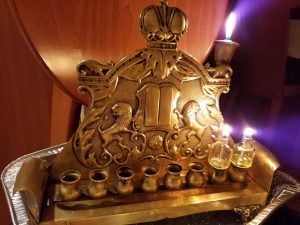
The miracle of Chanukah revolves around a single-day-supply of olive oil burning for eight days during the rededication of the Holy Temple in Jerusalem (Bet
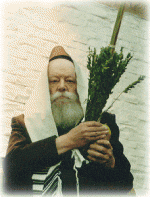
Albert Einstein had a lifelong quest—to develop a unified field theory—the theory that would describe as a single field gravity and electromagnetism (just as Maxwell
This post is a continuation and the conclusion of the previous post, THE FIFTH FORCE. Aside from the connection with the last week’s Torah portion,

According to the Saadia Gaon, these two Torah portions – Nitzavim and Vayelech – are really one portion, which sometimes is split into two. In the
In the Torah portion Emor (Leviticus 21:1–24:23), we are instructed to abstain from work every seventh day on Shabbat. Next week’s Torah portion, Behar, continues

There is a dispute in the Talmud as to when the world was created. According to Rabbi Eliezer, the world was created in the month

This is the thing which the Lord hath commanded: Gather ye of it every man according to his eating; an omer a head, according to
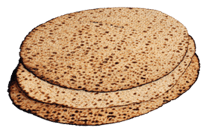
There were men who were ritually unclean [because of contact with] a dead person, and therefore could not make the Passover sacrifice on that day.
When G‑d created the first humans, Adam and Eve (Chavah), He created them as one. And G‑d created man in His own image, in the

I grew up in Russia and was raised on the metric system based on decimal arithmetic. When we immigrated to the U.S., I had to
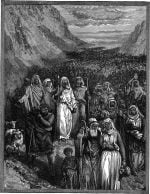
These are the journeys of the children of Israel… (Numbers 33:1) When G-d brought the Jews out from Egypt, He brought them out with the mystery of
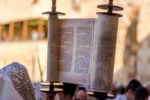
Passover has ended. All Jews hastily return their Passover dishes to storage in special cabinets or the attic until the next Passover. After an eight-day
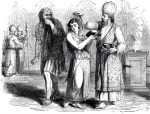
In quantum mechanics, the state of a physical system is described by the so-called wave function (or the “wavefunction”). All attempts by Schrödinger, who first
On Seder night we drink four cups of wine and eat three matzoth. Why four cups and not three? Why three matzoth and not four?
The Shulchan Aruch – the Code of Jewish Law – states that 30 days before Pesach (Passover) one needs to start learning the laws of
The holiday of Passover – Pesach – is called zman cheruteinu– time of our freedom. As we have discussed many times on this blog (see

Today is Rosh Chodesh Adar Bet – the New Moon and the beginning of the second month of Adar. If we ever to have a month

As we have discussed in the post, It’s the time, stupid, Pharaoh never got the message that it’s all about mastery of time. To make
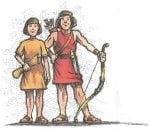
Entanglement is often called the most baffling and quintessential phenomenon in quantum mechanics. What is entanglement, in a nutshell? Two particles born from one reaction
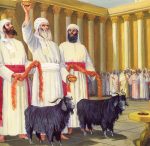
Some people may be fooled by randomness but, when we realize that randomness opens the door to the Divine, we are saved by randomness. It
This Rosh HaShanah I had the strangest dream. I dreamed that I was giving a lecture in cosmology at a university when I suddenly realized

Speak to the children of Israel and have them take for you a perfectly red unblemished cow, upon which no yoke was laid… The cow
And the entire Mount Sinai smoked because the Lord had descended upon it in fire, and its smoke ascended like the smoke of the kiln…

There is hardly a Jewish holiday more widely celebrated than Passover (Pesach). Jews of all denominations, affiliations, and levels of religious observance, if any at

And he shall take the two he goats, and place them before the Lord at the entrance to the Tent of Meeting. And Aaron shall